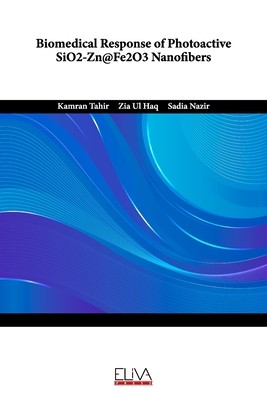
- We will send in 10–14 business days.
- Author: Zia Ul Haq
- Publisher: Eliva Press
- ISBN-10: 1636483062
- ISBN-13: 9781636483061
- Format: 15.2 x 22.9 x 0.2 cm, softcover
- Language: English
- SAVE -10% with code: EXTRA
Biomedical Response of Photoactive SiO2-Zn@Fe2O3 Nanofibers (e-book) (used book) | bookbook.eu
Reviews
Description
Here, in the presence of Fe3O4 nano-fibers, we prepared SiO2-Zn@Fe2O3 hybrid Nano-fibers through a novel and simple one-pot redox reaction between ZnSO4 & SiO2. The Fe3O4 exterior nano-fibers would be homogenously covered by SiO2 coating to arrange a distinctive core-shell construction and then Zn nanoparticles are intercalated in the covering of SiO2. The synthesized nanofibers were tested for photodegradation of methylene blue (MB). The result showed that 99% MB was degraded in 60 minutes. Furthermore, the antibacterial potential of SiO2-Zn@Fe2O3 nanofibers was tested against E. coli and S. aureus bacteria both in light and dark. The impact of different analysis such as Reactive oxygen species (ROS) analysis, irradiation ef-fect on bacterial inhibition, concentration effect of SiO2-Zn@Fe2O3 nanofibers and reduc-tion of DPPH studied. The findings clearly demonstrate that ROS is produced in the presence of SiO2-Zn@Fe2O3 nanofibers in bacterial cells and is responsible for their inhibition. Findings have shown that synthesized nanostructures can also increase the stability of DPPH radicals with increasing concentrations of nanomaterials, making them a strong candidate for DPPH reduction. The overall results show that the efficacy of SiO2-Zn@Fe2O3 nanofibers for inhibition was more pronounced than that of individual iron oxides.
EXTRA 10 % discount with code: EXTRA
The promotion ends in 19d.10:29:56
The discount code is valid when purchasing from 10 €. Discounts do not stack.
- Author: Zia Ul Haq
- Publisher: Eliva Press
- ISBN-10: 1636483062
- ISBN-13: 9781636483061
- Format: 15.2 x 22.9 x 0.2 cm, softcover
- Language: English English
Here, in the presence of Fe3O4 nano-fibers, we prepared SiO2-Zn@Fe2O3 hybrid Nano-fibers through a novel and simple one-pot redox reaction between ZnSO4 & SiO2. The Fe3O4 exterior nano-fibers would be homogenously covered by SiO2 coating to arrange a distinctive core-shell construction and then Zn nanoparticles are intercalated in the covering of SiO2. The synthesized nanofibers were tested for photodegradation of methylene blue (MB). The result showed that 99% MB was degraded in 60 minutes. Furthermore, the antibacterial potential of SiO2-Zn@Fe2O3 nanofibers was tested against E. coli and S. aureus bacteria both in light and dark. The impact of different analysis such as Reactive oxygen species (ROS) analysis, irradiation ef-fect on bacterial inhibition, concentration effect of SiO2-Zn@Fe2O3 nanofibers and reduc-tion of DPPH studied. The findings clearly demonstrate that ROS is produced in the presence of SiO2-Zn@Fe2O3 nanofibers in bacterial cells and is responsible for their inhibition. Findings have shown that synthesized nanostructures can also increase the stability of DPPH radicals with increasing concentrations of nanomaterials, making them a strong candidate for DPPH reduction. The overall results show that the efficacy of SiO2-Zn@Fe2O3 nanofibers for inhibition was more pronounced than that of individual iron oxides.


Reviews